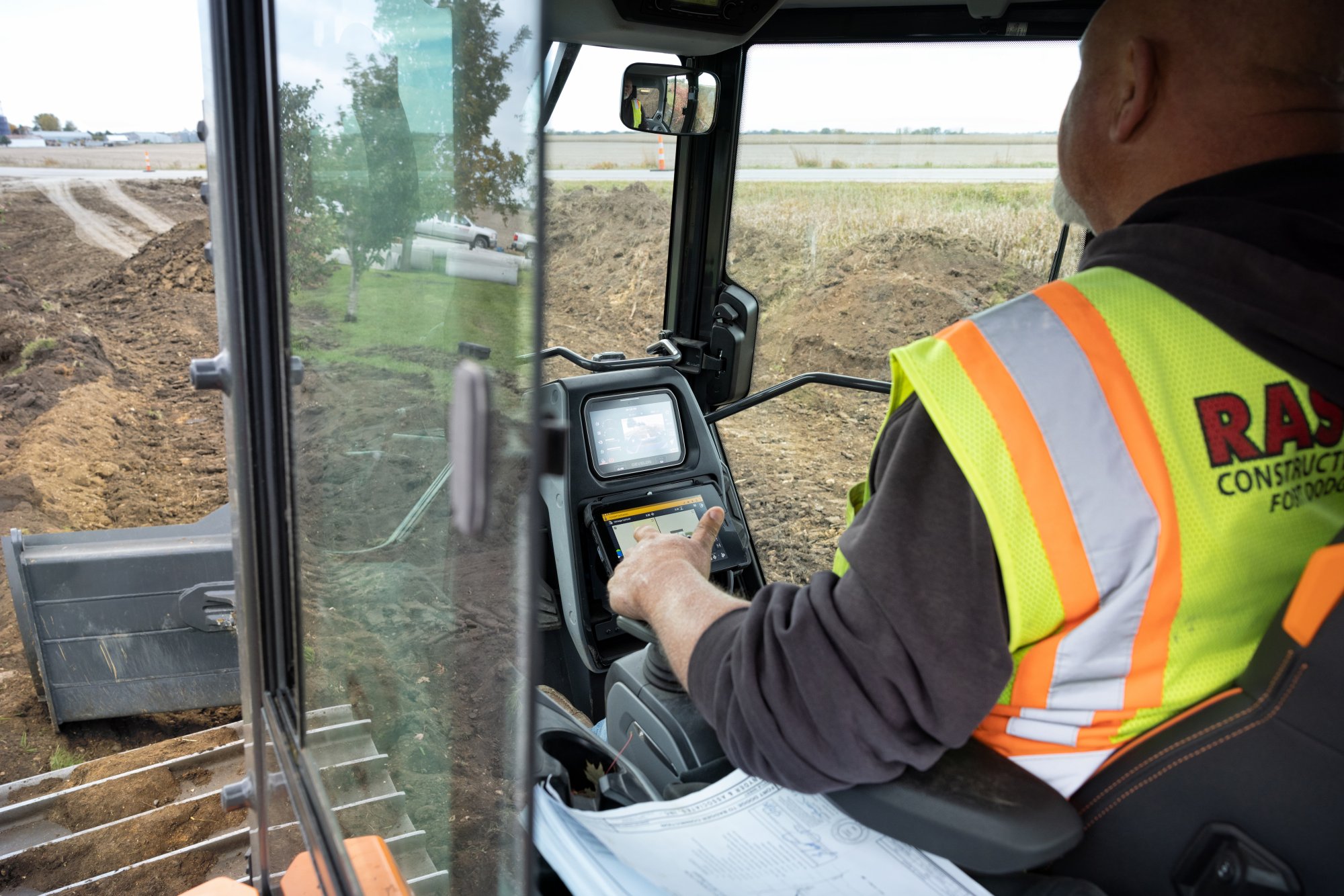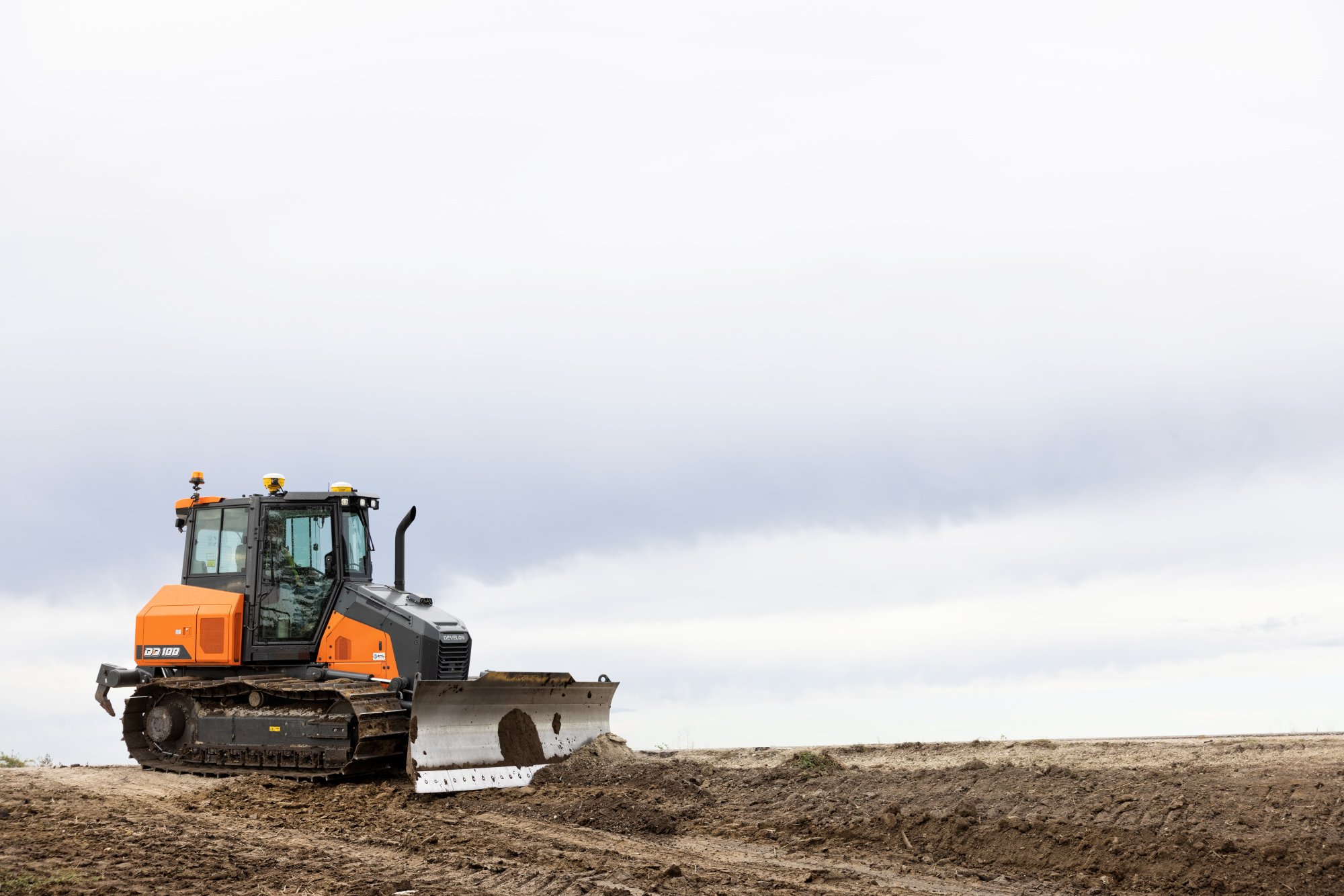
Grade control systems for dozers are game-changers on construction jobsites.
Choose between a basic two-dimensional (2D) grade control system or a more sophisticated three-dimensional (3D) grade control system. These technologies can help you improve your accuracy, efficiency and productivity on rough- or fine-grading projects.
These advanced systems leverage sensors, GPS and digital models to ensure that grading is executed to exact specifications. Use them to streamline operations, prevent project delays and ensure that grading meets your jobsite requirements.
Let’s discuss how 2D and 3D grade control systems work, as well as their benefits and how they contribute to achieving superior grading results.
2D vs. 3D
2D grade control systems for dozers use simple height and angle measurements, typically achieved with lasers, although 2D systems can also be used without lasers. They allow you to work off a single plane — either flat, single or dual-slope — by helping to ensure that the blade is at the correct height and angle for the job.
2D is ideal for projects where general depth and slope are needed, such as grading a road or leveling a site. However, since it only measures two dimensions (height and angle), it doesn’t account for the overall terrain or changes in elevation over the entire site.
In contrast, 3D grade control uses GPS or other positioning systems to track the dozer’s exact position on the site and compares it to a digital model of the project. Grade control systems use information gathered from global navigation satellite systems (GNSS), GPS, laser, sonic or total station technology. This allows for adjustments in real time based on both height and the entire terrain’s layout.
A 3D system can be useful for more complex projects where precise work is needed, like elevation, slope and terrain. A 3D system is ideal for tasks such as grading for road and highway construction or earthmoving projects.
For both 2D and 3D systems, an additional monitor may be required in the dozer’s cab to provide vital information about grade and slope. Some 2D grade control systems, including those without lasers, use the standard monitor in the dozer.
Increased Efficiency
Both systems help improve the planning and execution of complex grading tasks. Using 2D or 3D grade control significantly reduces the need for rework on jobsites by enhancing grading accuracy and efficiency.
These systems allow for precise control over blade elevation and angle, minimizing inconsistent grading. In a 2D system, automatic adjustments based on sensor data ensure that the blade maintains the correct height and slope throughout the grading process.
3D grade control systems integrate GPS technology and digital terrain models (DTMs). By comparing the dozer’s position and blade settings to a detailed 3D model of the site, these systems ensure that grading aligns accurately with design specifications. This real-time feedback and automatic adjustment capability mean that the grading can be completed to the required standards in fewer passes. As a result, you can avoid the need for extensive rework.

Improved Safety
Minimizing potential hazards associated with uneven or incorrect grading is important on the jobsite. A 2D system’s ability to autonomously adjust the blade’s height and angle reduces the risk of error, ensuring consistent and accurate grading. Real-time feedback can alert you to any issues with the desired grade, allowing you to make immediate corrections and prevent unsafe conditions.
3D grade control systems improve safety using advanced technologies such as GPS and geofencing. GPS tracks the dozer’s precise location, while geofencing establishes boundaries to prevent the equipment from entering restricted or hazardous areas. This helps avoid accidents and ensures that the dozer operates within safe parameters.
Collision avoidance systems, which are often integrated into 3D systems, detect potential obstacles and provide alerts. The use of DTMs gives you detailed site information, allowing you to navigate complex terrains safely and avoid dangerous areas.
Real-time data monitoring in 3D systems continuously tracks the dozer’s position and settings. Warnings and alerts, such as audible and visual signals, keep you informed of any immediate concerns, further enhancing your awareness and safety.
Training Is Key
The biggest adjustment when using 2D or 3D grade control is understanding how to operate these systems. You’ll need to learn how to set up and calibrate these components, as well as how to adjust the blade’s height and angle to achieve the desired grade. Instruction typically includes both manual and automatic modes and how to switch between them.
Training is more complex for 3D grade control systems due to the integration of GPS technology and DTMs. You’ll need to know how to interpret and use DTMs to guide grading operations, as well as how to utilize GPS data to track the dozer’s position. Training includes managing and updating software, understanding how to input and adjust project parameters and interpreting real-time data to make informed decisions.
The learning curve varies depending on the technology, but spending two hours a day for two weeks will give you a general understanding of how 2D and 3D grade control systems work and how they can benefit your operation.

Regular Maintenance
For 2D grade control systems, regular maintenance involves checking and calibrating sensors and lasers. Clean and properly align sensors to ensure accurate measurements. Lasers require periodic calibration to maintain precise grade control. Inspect the mechanical components of the system, such as the blade and hydraulic controls, to ensure they are functioning correctly and free of wear or damage.
For 3D grade control systems, inspect the GPS receivers and antennas for signal integrity and connectivity, as any issues can affect positional accuracy. The software that manages DTMs and provides real-time data also requires regular updates to make sure it operates effectively and integrates correctly with the hardware. The system’s sensors and electronics should be cleaned and tested regularly. Any signs of wear or malfunction should be addressed promptly.
Keeping detailed maintenance records can help track the system’s performance over time and identify any issues.
Remember that once installed, a 2D or 3D system is likely to stay on your dozer for its useful life. If you decide to add a grade control system to your dozer, work with your local dealer and a technology expert from the company that developed the system. They can help you properly install the components on your dozer, provide training and make sure everything is working correctly before you transport your machine to the jobsite.
Grade Tech Drives Contractor’s Success
Dalton Rasch is a third-generation family member who works for Rasch Construction in Fort Dodge, Iowa. He knows firsthand how 3D grade technology can be a valuable investment and how it’s paving the way in the industry. He uses a Trimble Earthworks 3D grade control system on his Develon DD100 dozer.
“To be able to put a full jobsite in a machine, so you know where you’re at on the site, and your cut fills, and what’s the best way to attack a dirt job that way,” he said. “It definitely pays for itself in time with efficiency of getting projects done. When I was growing up, we didn’t have GPS grade control. So it’s cool to see the new technologies and the way things are changing.”
